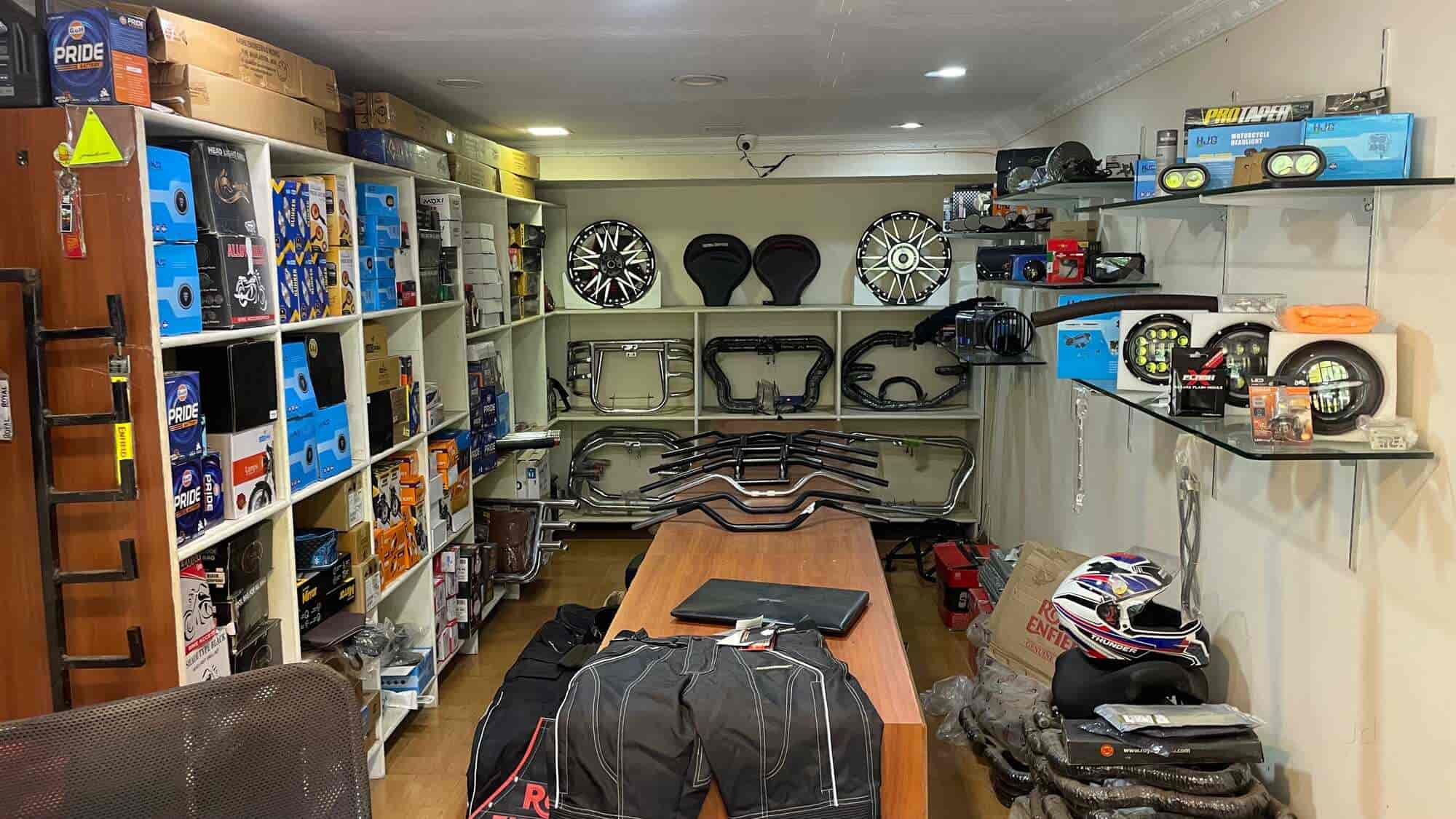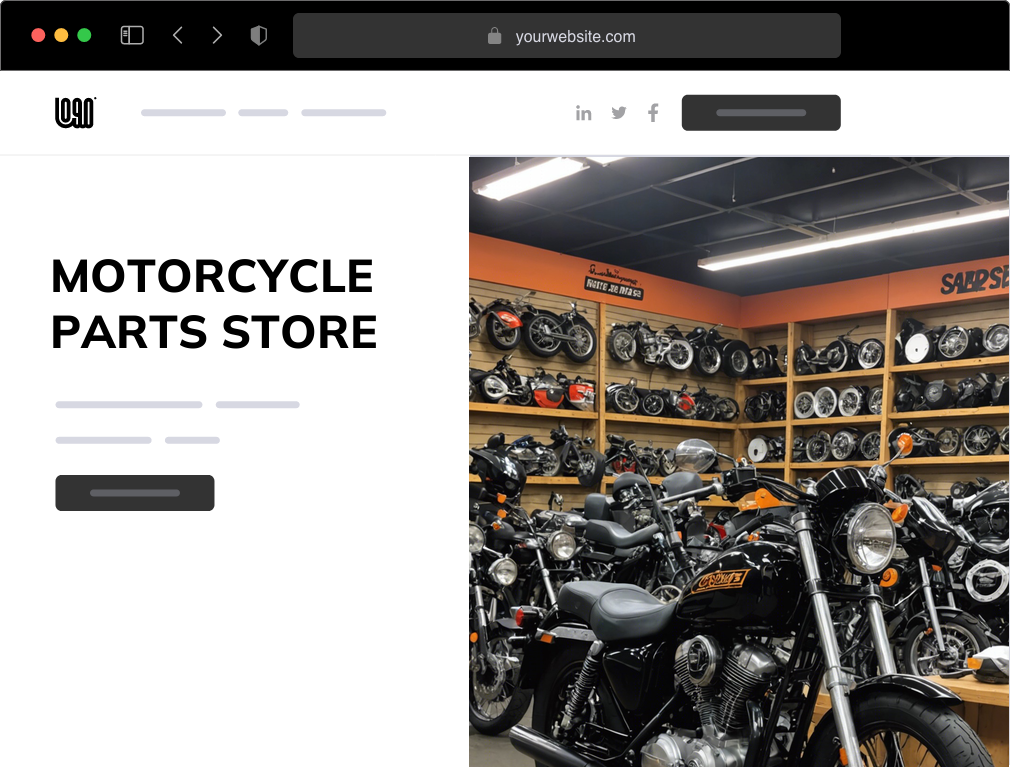Your Go-To Motorbike Shop for Quality Parts and Accessories
Your Go-To Motorbike Shop for Quality Parts and Accessories
Blog Article
Mastering Motorcycle Gears: Just How to Optimize Your Riding Experience
In the realm of motorcycling, mastering the art of gear adjustment is crucial for boosting your riding performance. Appropriately utilizing and comprehending motorbike equipments can dramatically impact fuel, control, and acceleration effectiveness, transforming an ordinary ride right into a seamless, electrifying journey. By integrating specific change timing and adjusting equipment option to various roadway problems, cyclists can ensure optimal engine efficiency and safety. The subtleties of clutch control, throttle coordination, and gear technicians bid a deeper expedition, guaranteeing to open the complete possibility of your machine. Just how can these techniques be taken advantage of to really enhance your riding experience?
Comprehending Gear Mechanics
At the core of bike characteristics, equipment technicians play a pivotal duty in transforming engine power right into motion, eventually dictating speed and control. The equipment ratios, carefully developed, determine the connection between engine transformations and wheel turns, affecting velocity and gas performance.
Comprehending gear technicians begins with acknowledging the relevance of the gearbox, which houses numerous equipments of differing sizes. These equipments engage through a procedure called meshing, where teeth of different gears engage to transfer power. The precision of this interaction is crucial; any imbalance or damage can cause inefficient power transfer, impeding performance. In addition, the plan and dimension of equipments influence the motorbike's capacity to deal with different lots and speeds.
Additionally, the idea of gear changing is important to maximizing performance. Prompt and smooth shifts guarantee that the engine runs within its optimum power band, avoiding unnecessary pressure and improving long life (moto parts nz). By understanding these mechanical complexities, cyclists can attain an unified mix of control, power, and effectiveness, raising their riding experience
Timing Your Shifts
Shift timing proficiency is necessary for optimizing motorcycle performance and boosting the riding experience. Effectively timed shifts ensure that the engine operates within its optimal power band, which is essential for keeping control, accomplishing smooth velocity, and making certain the long life of the motorbike. Riders must establish an intuitive feeling of when to shift gears, which includes recognizing the connection between engine revolutions per min (RPM) and speed.
To grasp shift timing, pay very close attention to the engine's noise and feel, as these provide essential hints about when to change equipments. The optimal shift factor typically happens when the engine approaches the upper variety of its power band without getting to the redline. Moving prematurely can cause a lack of power, while changing as well late may trigger unneeded engine strain
Furthermore, roadway problems and riding style impact change timing. In contrast, during freeway riding, fewer shifts at greater rates can be much more appropriate.
Enhancing Gas Performance
While grasping bike gears is vital for efficiency, improving fuel effectiveness is equally essential for both economic and environmental factors. Optimum gas consumption not only reduces functional costs however likewise reduces the ecological footprint of riding. To attain this, one have to recognize the complex partnership in between gear option and engine efficiency.
Riding in a higher equipment at reduced speeds can lead to engine hauling, which is detrimental to both gas economic climate and engine health. Alternatively, riding in lower gears at high speeds results in unnecessary gas usage.
Furthermore, normal maintenance plays a crucial duty in gas effectiveness. Making sure that the bike is well-tuned, with clean air filters and correctly pumped up tires, can decrease and enhance the rules of aerodynamics gas wastefulness. Furthermore, taking on a riding style that accepts gradual acceleration and smooth deceleration can add to better gas economy.

Techniques for Smooth Transitions
Attaining smooth gear changes is fundamental to boosting the riding experience and ensuring the durability of a bike's transmission system. Appropriate gear changing not just adds to a smooth experience but also lessens wear and tear on the mechanical parts. To grasp the art of smooth transitions, riders have to concentrate on a couple of crucial strategies.

Second of all, clutch control plays a crucial role. Engaging and disengaging the clutch efficiently needs technique. The clutch lever must be released gradually, enabling a seamless transfer of power from the engine to the wheels without creating a jolt or sudden activity.

Adjusting to Road Problems
Navigating varied roadway problems is an important ability for any type of motorcyclist aiming to keep control and safety. Whether you're riding on wet surface areas, discover this info here crushed rock roadways, or browsing doglegs, your ability to adjust your gear usage and riding strategy is vital. Recognizing just how to adjust your equipments suitably can substantially influence traction and security, ensuring a much safer journey.
On wet roadways, it is suggested to preserve higher equipments to reduce torque and reduce wheel spin. This approach aids keep hold on slippery surfaces, permitting for smoother acceleration and deceleration. In comparison, when riding on crushed rock or unequal surface, lower gears are more suitable. Lower gears give far better control and allow you to react more quickly to unexpected adjustments in the road surface area.
Sharp curves demand exact gear management to stabilize rate and control. Downshifting before going into a curve can aid maintain momentum while making sure the motorcycle stays secure throughout the turn. Consistent technique in different conditions boosts your ability to respond and anticipate to changes in roadway structure and incline.
Verdict
Understanding motorcycle equipments significantly boosts the riding experience by boosting gas, velocity, and control efficiency. A comprehensive understanding of gear auto mechanics and exact change timing makes certain the engine runs within its optimum power band, while smooth shifts via efficient clutch and throttle control boost convenience and efficiency. Adjusting equipment selection to different roadway problems, such as making use of higher gears on wet surfaces and reduced equipments on gravel, further enhances handling and safety and security. Eventually, these skills elevate the total trip.
Recognizing gear mechanics begins with acknowledging the value of the gearbox, which houses several equipments of varying sizes. These gears connect through a process recognized as meshing, where teeth of various gears involve to send power (motocross gear nz). Gentle adjustments to the throttle during equipment changes can prevent jerky movements and keep a regular riding speed
Whether you're riding on wet surface areas, crushed rock roadways, site or navigating sharp turns, your capability to adapt your gear use and riding technique is paramount. Adjusting gear selection to various road conditions, such as using higher gears on wet surface areas and reduced gears on gravel, additional boosts handling and safety.
Report this page